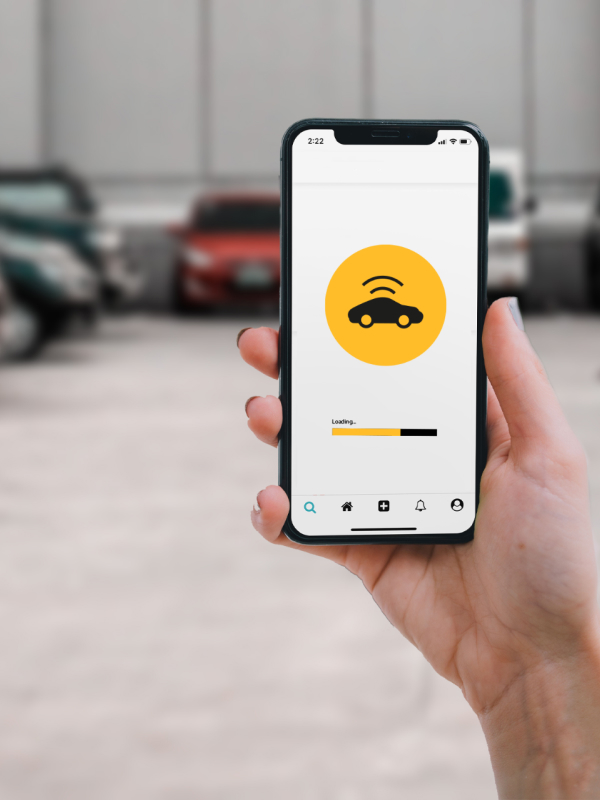Deliver Shared Mobility solutions to unlock new revenue streams

We specialize in building complex, cloud-native systems that seamlessly integrate OEMs’ connectivity offerings with rental or insurance providers leveraging their APIs.
See how we drive change in shared mobility
Learn about comprehensive solutions for the ever-evolving landscape of new mobility. Gain insights into how our proficiency in cutting-edge technologies enables us to deliver innovative solutions.

Telematics Platforms
Managing a fleet of devices is not an easy task. Tracking the vehicle status, the location, and manually planning maintenance is demanding and error-prone. With telematics platforms, Mobility Providers can automate the process. Grape Up engineers successfully built a telematics platform for a large rental company that supports tracking the vehicle location, fuel level, or opening and closing doors. As a result, not only the everyday operations are straightforward but also locating stolen vehicles is possible.

3rd Party Integration
In an ecosystem where each OEM builds its own solution for the Connected Car system, the B2B APIs integration is crucial. The integration layer is required to use a single system for operating a fleet of vehicles provided by various automotive brands. Opportunities for 3rd party integrations are not limited to vehicle status check using OEM APIs but also usage-based insurance, predictive maintenance, or payments.
FMS Enhacement
Fleet modernization process has accelerated in recent years with the influx of EVs and vehicles with embedded connectivity. The fleet management systems that are in place may lack the capabilites necessary to manage the connected car fleet and take full advantage of the opportunities it presents. Enhancing these systems with feaures like automated vehicles enrollment using OEM API can massively improve the process of in-fleeting and de-fleeting.
Fleet Management Operations
Launching the connected car operations for fleet owners lets them manage the fleet using real time information about location, fuel status, odometer, oil & battery life, tire pressure and EV battery charge status. Using this data and added functionalities like geofencing, the operators can recover missing or stolen vehicles, reduce time vehicles spend in impound or accurately report on the fuel level on drop-off.

Connected Car Initiative: Revolutionizing Telematics through Consulting, Development, and Agile Transformation
Automotive

Designing AI and ML Deployment Platform to Accelerate the Implementation of AI-powered Software
Automotive

Building a Touchless Platform to Improve Customer Experience And Unlock New Revenue Streams
Automotive
Find out how Shared Mobility provides benefits for the automotive industry
Analyzing behavioral data and driving patterns based on car telemetry
Analyzing behavioral data allows automotive companies to unlock the potential for cost reduction, open new revenue streams, or even create new business models.
In the insurance industry, it is a fundamental feature allowing for pay-per-use offering as well as granting safe drivers with discounts for the insurance policies.
For the automotive industry, however, it can be treated as the base for predictive maintenance – it allows to plan maintenance works based on the usage of car components, but also to help to analyze the range of the electric car battery based on the long term driving patterns.
For the rental car business, it allows to offer discounts for safe drivers but also allows to propose features and vehicles most suitable for them based on the patterns of their previous behavior.
Integrating OEMs telemetry APIs for shared mobility purposes
Integrating OEM’s Telemetry is one of the crucial aspects allowing to unlock new revenue streams as well as reducing operational costs for the mobility providers. One of the key unlocked features is to allow for the bi-directional communication between the car and the user. Locating the car in the parking lot, opening/closing the car from the mobile application, or checking the fuel level significantly increases user satisfaction. On the other hand, analyzing the behavioral data of the driver or the car telemetry itself allows insurance providers to create pay-per-use insurance or discounts for safe drivers.
Grape Up has a proven track record of designing and developing complete telemetry platforms, creating APIs for OEMs that can later be exposed for 3rd parties but also consuming APIs of different OEMs and integrating these data with internal systems.
Geofencing for theft prevention and location-based services
Geofencing increases the safety of fleet companies’ operations by adding the ability to track the location and alert on breaking the agreed boundaries. This is most often a case when a vehicle gets stolen, or a customer tries to avoid higher charges for going abroad. With location-based services, the rental or fleet company is immediately notified of such violation and can act appropriately.
One of Grape Up’s customers – a rental car company, developed a Stolen Vehicle Identification system based on OEM’s Telemetry and Geofencing. During just 6 months from launching this feature and integrating it with its internal fleet management system, the company was able to locate 356 missing (stolen or impounded) cars, thus saving hundreds of thousands of dollars by recovering cars, as well as administration costs.
Reduce manual labor and improve customer experience with touchless mobile apps
Breakthrough of the COVID-19 pandemic completely changed the way we work and live thus also changing the way we travel, rent, buy or lease cars. It is now crucial for mobility providers to allow their customers for a counter-less rental experience allowing them to avoid queues, but also unnecessary contact.
For one of its customers, Grape Up has designed and developed a touchless system allowing clients to rent a car directly from a mobile phone. Complete customer journey comes to selecting a car, buying insurance and additional features, paying through mobile phone then locating and opening/closing the car – all from the mobile device. The platform is integrated with OEMs Connected Car platform APIs and an internal telematics system, making the system robust and responsive.
Write to us, if you’re looking for experts in building software for Shared Mobility
Do you need to better understand shared mobility market?
What are shared mobility services?

Shared mobility services refer to transportation solutions that allow individuals to access vehicles on a shared basis rather than owning them outright. These services provide convenient and flexible transportation options to users, typically through mobile applications or online platforms. Examples of shared mobility services include car-sharing, ride-hailing, bike-sharing, and scooter-sharing. These services aim to optimize vehicle utilization, reduce traffic congestion, and provide cost-effective and environmentally friendly transportation alternatives.
How do cloud-native systems contribute to shared mobility services?

Cloud-native systems are instrumental in powering shared mobility services. They provide a robust and flexible infrastructure that can scale and adapt to changing demands. By leveraging cloud computing technologies, these systems enable seamless integration of different services and components. They also support real-time data processing and analytics, empowering shared mobility providers to optimize their operations, improve user experiences, and make informed business decisions.
How does integrating connectivity offerings with rental or insurance providers benefit shared mobility services?

Integrating connectivity offerings with rental or insurance providers in shared mobility services offers multiple benefits. By leveraging APIs and integrating with these providers, shared mobility services can enhance their offerings and user experiences. Connectivity integration enables features like remote vehicle access, tracking, and enhanced security. Moreover, integrating with rental or insurance providers streamlines the booking and payment processes, ensures seamless user authentication, and provides access to additional services such as insurance coverage or extended rental options. This integration enhances the overall convenience and reliability of shared mobility services.